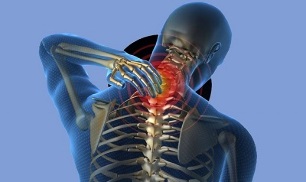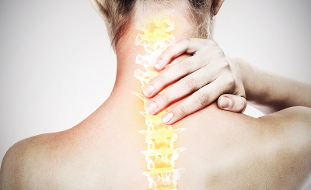
Today, cervical osteochondrosis is one of the most common diseases in people over 30 years of age. In the course of the pathological process, the intervertebral discs and vertebrae are destroyed. Subsequently, the disease affects nearby vessels, tissues, and ligament systems.
Compelling reasons for the threatening prevalence of this disease, doctors call a sedentary lifestyle and sedentary work.
In addition, the development of the disease is facilitated by:
- nervous stress, constant overwork;
- hard physical work;
- overweight;
- disorders in the functioning of the body's immune system;
- uncomfortable neck position during sleep;
- complications after infectious diseases.
Cervical osteochondrosis often develops in the elderly as a result of senile changes in the body.
Cervical osteochondrosis has 4 degrees. This article will consider the symptoms and features of the treatment of the disease of stages 1 and 2, since it is in the stages where the consequences of the disease are reversible, complex treatment helps well, including the use of drugs, traditional medicine, exercises. , physiotherapy.
Stage 1 cervical osteochondrosis
The initial signs of cervical osteochondrosis in stage 1 are weak. Often times, a person does not pay attention to them ("the neck has burst, it will pass by itself").
The body generally indicates the onset of the disease as follows:
- pain in the neck, aggravated by turning the head;
- feeling of numbness and slight tingling in the arm and shoulder;
- general weakness of the body.
At this stage in the development of the disease, many are in no rush to see a doctor in vain and attribute the ailments to overwork and nervous stress.
The pathological process has just begun its destructive activity. The intervertebral discs have not completely lost their elasticity. Timely medical assistance will help prevent further development of stage 1 osteochondrosis.
Therapeutic methods in combination with massage and physical therapy can restore the affected area to complete healing.
Stage 2 cervical osteochondrosis

The late search for medical help implies the progression of cervical osteochondrosis, the disease passes to the second stage. Further destruction of the intervertebral discs occurs, the pathological process affects the vertebrae themselves and the nearby tissues and vessels.
The pinching of the nerve roots leads to the fact that the pain is not localized, but radiates to the arm, shoulder, back, under the scapula.
Patients present to the cardiologist with complaints of pain in the heart area. During the examination, it turns out that the cardiogram is within normal limits, and the painful sensations are caused by osteochondrosis.
Stage 2 cervical osteochondrosis manifests itself in the following symptoms:
- severe muscle pain in the neck;
- inability to turn, tilt, lift head;
- severe neck and upper shoulder girdle numbness;
- frequent headache;
- constantly high blood pressure;
- reduced performance;
- feeling constantly tired, feeling weak;
- drawing pain radiating to arm, below shoulder blade, to back;
- pain in the region of the heart.
There is constant tension in the back muscles, causing the vertebrae to shift. This can cause a curvature of the spine.
Treating the disease at this stage of development requires a more serious approach, including:
- drug therapy;
- medical and diagnostic examination;
- physiotherapy;
- acupuncture;
- physical therapy exercises;
- massage;
- strict diet;
- consultation of limited specialists (orthopedist, surgeon, neuropathologist).
The full course of treatment is developed taking into account the characteristics of the patient's body, age, severity of the disease, it can last up to 2 months.
Prevention of cervical osteochondrosis in stages 1 and 2
To avoid attacks of cervical osteochondrosis, it is necessary to regularly carry out a set of preventive measures.
The basic guidelines are as follows:

- Keep track of your weight. Every extra kilogram increases the load on the spine. This will inevitably lead to a loss of elasticity of the intervertebral discs, impaired blood circulation. Which, in turn, contributes to the appearance of osteochondrosis.
- Try to move around a lot. A sedentary lifestyle helps reduce muscle tone, all body systems start to function intermittently. Exercising outdoors, swimming, biking, walking are helpful.
- Maintain a correct posture. Don't slouch, keep your back straight while walking while sitting at your desk. To do this, make it a rule to do a few simple exercises every day.
- Choose a chair with a column support to work on the computer. Get up from the table every half hour, do a little warm-up.
- Elimination of infectious foci in the body. Any infectious focus in the body can cause preconditions for the appearance of osteochondrosis of the cervical spine. This especially applies to the ENT organs (ear, throat, nose).
- Correct body position during sleep and rest. Orthopedic mattresses and pillows are recommended. Its design ensures the correct position of the spine, allows the body to relax as much as possible during rest.
- The complex of daily physical exercises should include exercises for the prevention of osteochondrosis of the spine.
- Proper nutrition. Do not abuse smoked, greasy and spicy foods. Try to introduce more vegetables, greens and fruits in your daily diet.
- Stop smoking alcohol and tobacco. Now it is not only unhealthy, but it is also not fashionable.
- Have a medical exam annually. Ultrasound, X-ray examination, and CT scan can detect the disease in the early stages of development.
Remember:your health is in your hands. Following the simplest rules will allow your body to avoid such a serious disease as cervical osteochondrosis.

























